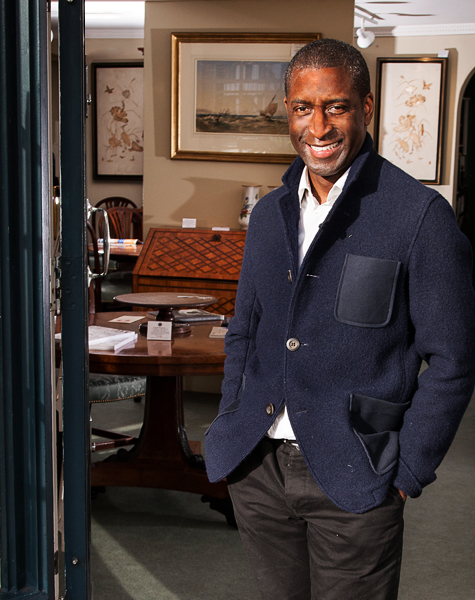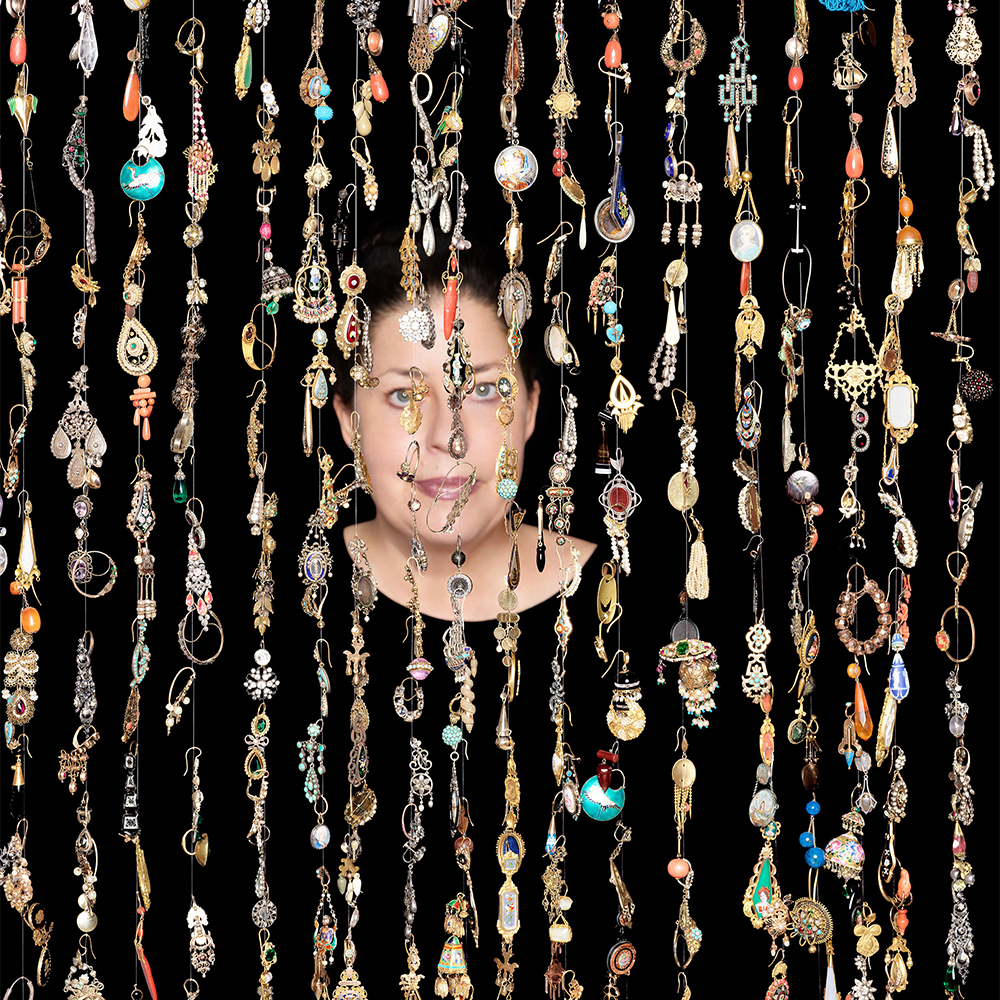Understanding the market for fine antiques can be daunting because so many factors contribute to the pricing of a piece. That’s why Introspective is launching this new column, “Why it’s Worth It,” which will shed some often-needed light on the various considerations — from materials and style to provenance and creator — that determine what numbers end up on a dealer’s price tag. For our first subject, we have chosen a pair of English rococo girandole mirrors offered by 1stdibs member Clinton Howell — the New York dealer who is also president of the Art and Antique Dealers League of America (AADLA) — to share some insights into how he set his price: $45,000 for the pair.

August 28, 2013As the New York antiques dealer Clinton Howell explains, a number of factors determined the price of these elaborately carved gilt-wood English rococo girandole mirrors seen above and in close-up at top. Photos by Richard Goodbody
QUALITY OF DESIGN
“You could build a room around these mirrors, they are so special,” says Howell, whose focus is fine 18th-century English antiques, with an emphasis on mirrors. “They were made between 1745 and 1760, the high point of the rococo style in England for furniture.” And, indeed, their asymmetrical composition is “quintessentially rococo,” Howell explains.
The lively, playful silhouette of the mirrors is unique, but the motifs — vines, leaves, icicles — are not. “The rococo had a vocabulary, which often included light C-shaped scrolls, carved foliage, shells, rock formations, birds and small animals,” Howell notes. “But the point was to produce the unexpected — a bit like telling a well-known story in a unique way.” The greater the originality of the design, the greater the value of the piece.
AGE AND RARITY
The popularity of rococo furniture was short lived in England; it was soon superseded by the neoclassical. The French architect Jacques-François Blondel, a proponent of the neoclassical, once called its predecessor “only a confused mixture of attributes placed indiscriminately, allied with ornament of bizarre imagination.” Contemporary connoisseurs don’t put much stock in such 18th-century denouncements, and the style’s brief flowering is precisely what makes the surviving examples so precious today.

Left: An engraving of an interior Meissonnier created for a Warsaw palace captures the opulence of the period. Right: Provenance from a great English country house — such as the Tudor-period Cassiobury House whose staircase is now in the Metropolitan Museum of Art, can increase a piece’s value. Both images courtesy of the Metropolitan Museum of Art

The swirling leaves and asymmetrical design of this 18th-century gilt-bronze clock are typical of the work of Juste-Aurèle Meissonier, the French craftsman credited with refining the rococo style. Courtesy the J. Paul Getty Museum
CRAFTSMANSHIP
The mirrors exhibit two qualities one should look for in English rococo: There is movement to the delicate acanthus leaves and vines and a deep plasticity of the carving. The quality of the anonymous maker’s work is very fine, if not quite up to the standard of, say, Juste-Aurèle Meissonier, the architect, designer, übercraftsman and royal goldsmith to Louis XV who is credited with perfecting the rococo style. (Howell posits that had the mirrors been made by Meissonier, they’d be worth $1 million.)
Craftsmanship is something Howell knows a great deal about. Before he hung his shingle as a dealer 39 years ago, he studied carving and gilding at the London College of Furniture. “I was terrible at carving,” he recalls, “but I learned a lot, and now I use only the best professional restorers here and in London.”
CONDITION
These mirrors are in excellent condition and did not require any restoration. Original condition can enhance value, but extensive work can also increase the price: Sending a mirror to London to repair a crack in the frame or restore the gilding costs thousands of dollars in labor, shipping, insurance and fees, all of which usually gets passed on to the buyer.
PROVENANCE
Howell acquired the mirrors at an auction and no previous owners were listed. If it could be proved that a great ducal family commissioned the mirrors or that they came out of an important English country house, the price would be far higher, as a glamorous provenance always ups the value. “There are a lot of English antiques with no known provenance,” Howell explains. “In the twentieth century, twelve-hundred country houses were torn down in England — about one out of every six — due to newly imposed income taxes, punitive death duties, the heavy loss of life in World War I, fluctuations in the economy and, after World War II, the policies of the Labor government. These beautifully furnished places were emptied out before being demolished.”

Clinton Howell’s booth at a recent edition of the Winter Antiques Show in New York displayed a range of important 18th-century wares, including mirrors.

“Your reputation is a testimony to who you are,” says Howell, seen here in his booth at the Spring Show NYC this past May.
FASHIONABILITY OF THE STYLE
Trends in antique-collecting are typically cyclical. Today, prices for most 18th-century English antiques are down from what they were in the 1980s (prices for the most rare pieces, however, are double). These mirrors approach the summit but aren’t quite there. (Howell notes they would also be far more expensive if they were larger; they measure only 29 inches by 17 inches.) Of course, it is to the buyer’s advantage to buy English rococo before the pendulum in taste swings back.
REPUTATION OF THE DEALER
In Howell’s case, the buyer is paying not just for the piece but also for his decades of expertise. “Your reputation is a testimony to who you are,” he says. “Reputation means people come back to you on a regular basis.” Location can also play a role: Howell has an elegant shop on Manhattan’s Upper East Side. A dealer with a beautiful gallery on a fashionable street in a major city may charge more for antiques than a private dealer working from home.
What’s more, Howell is one of those old-fashioned dealers who believes so strongly in the quality of his stock that he’ll buy back a piece if a client moves, marries or merely has a change of heart. Many people would find that guarantee alone worth paying a premium for.


